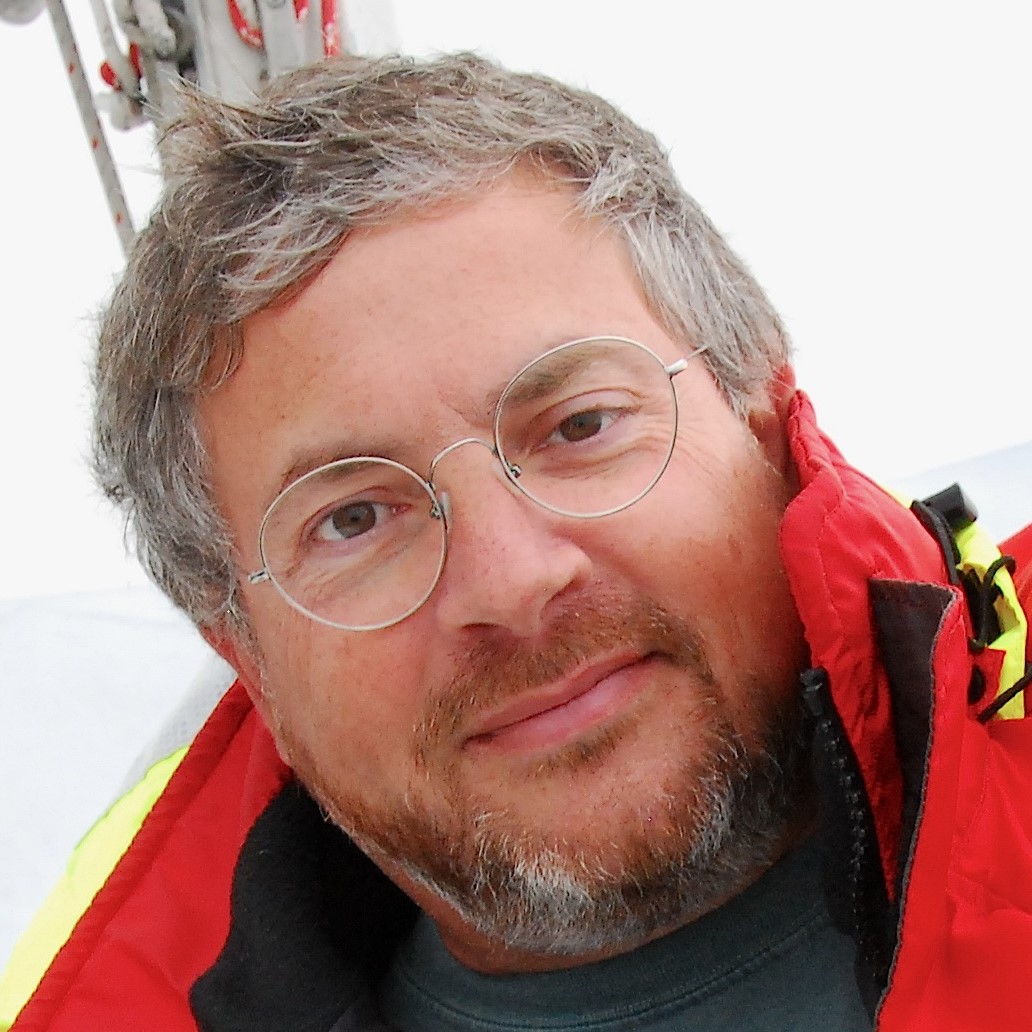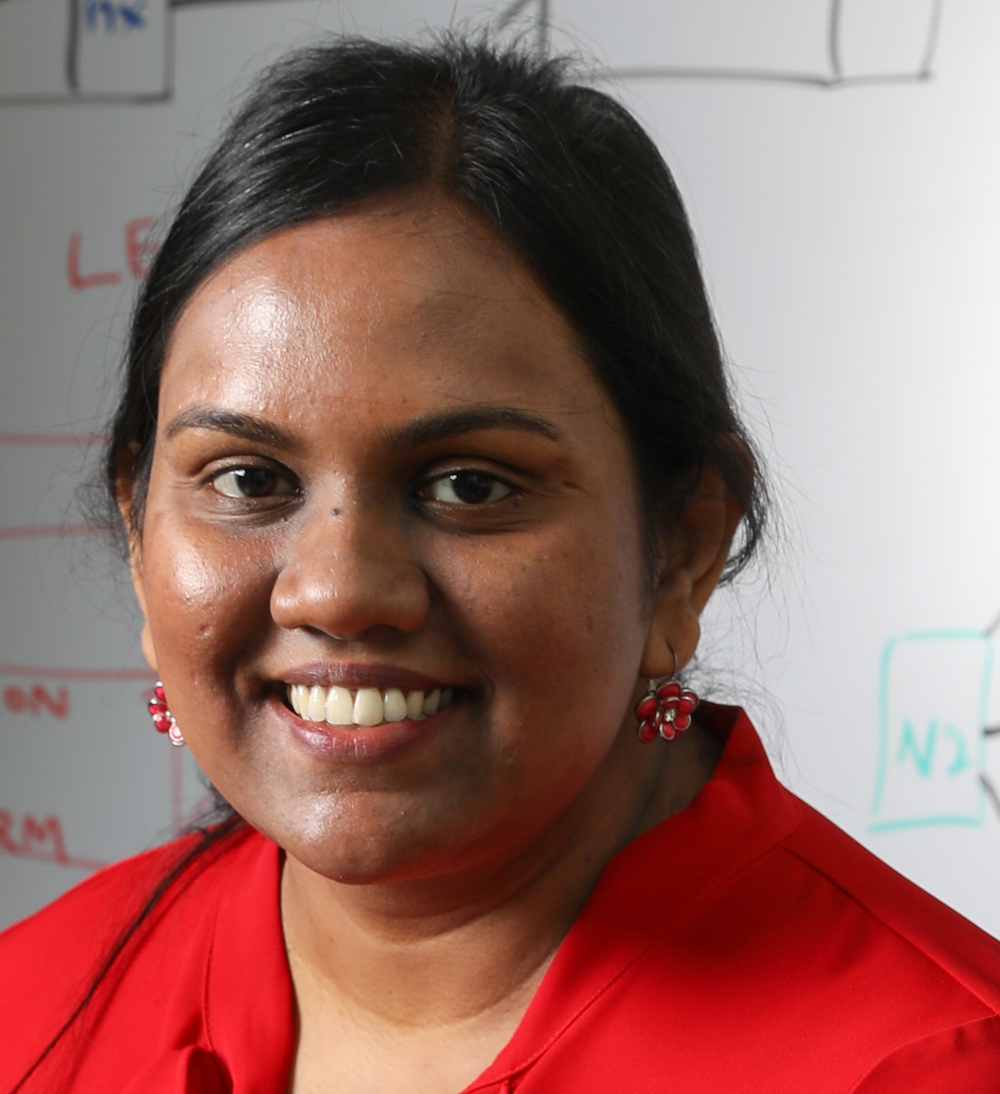AI for Social Good 2020 Symposium Program
All times are in Eastern Standard Time.
Friday, Nov 13
| Friday, Nov 13 |
10:00 |
Welcome & Opening Remarks (slides) |
Symposium Chairs |
|
10:05 |
Keynote: AI and Machine Learning in Understanding and Predicting COVID-19 (slides) COVID modeling and prediction is a crowded area, but in this instance, more crowd is better. We study the fundamental AI and Machine learning challenges relevant to COVID prediction, and how we addressed those challenges. One has to pin down what we would like to learn from the data, and reconcile that with what we can learn from the data. What we can learn from the data tells us what is happening as opposed to what we think ought to happen. Focusing on what we can learn drove our focus toward simple local models with robust change-point analysis and model identification. Our approach allows data at the county-level to dictate the learning for a county, which allows us to infer quantities such as the number of infectious and immune individuals at a county-level. Such quantities are not easy to deduce from other models or without extensive infection and/or antibody testing. Our algorithms are fully automated and in a team effort, we have produced two useful tools: COVID War-Room and COVID Back-to-School. Most of our results will be drawn from these tools. |
Prof. Malik Magdon-Ismail (Rensselaer Polytechnic Institute, USA)
Bio: Professor Malik Magdon Ismail has been a professor of computer science at Rensselaer since 2000. He obtained a B.S. from Yale in 1993 and a PhD from the Caltech in 1998. His main research interests are in the theory, efficient algorithms and applications of machine learning from data. His publications span a number of areas from healthcare to finance to social and distributed networks. Lately he has been applying machine learning to modeling and predicting COVID-19, see the COVID War Room (covidwarroom.idea.rpi.edu) and COVID Back-To-School (covidspread.idea.rpi.edu). |
|
|
10:40 |
Short Break (5 mins) |
||
|
Paper Session 1 |
|||
|
10:45 |
Robust Lock-Down Optimization for COVID-19 Policy Guidance (slides) |
Ankit Bhardwaj, Han-Ching Ou, Haipeng Chen, Shahin Jabbari, Milind Tambe, Rahul Panicker and Alpan Raval |
|
|
11:00 |
Reinforcement Learning for Optimization of COVID-19 Mitigation Policies (slides) |
Varun Raj Kompella, Roberto Capobianco, Stacy Jong, Jonathan Browne, Spencer Fox, Lauren Meyers, Peter Wurman and Peter Stone |
|
|
11:15 |
COVID-19 in Spain and India: Comparing Policy Implications by Analyzing Epidemiological and Social Media Data |
Parth Asawa, Manas Gaur, Kaushik Roy and Amit Sheth |
|
|
11:30 |
Measuring and Visualizing Social Distancing Using Deep Learning and 3D Computer Vision |
Bilal Abdulrahman and Zhigang Zhu |
|
|
11:45 |
Long Break (15 min) |
||
|
Paper Session 2 |
|||
|
12:00 |
Towards Context-aware Knowledge Entailment from Health Conversations |
Saeedeh Shekarpour and Faisal Alshargi |
|
|
12:15 |
Emergency Department Optimization and Load Prediction in Hospitals (slides) |
Karthik K. Padthe, Vikas Kumar, Carly M. Eckert, Nick M. Mark, Anam Zahid, Muhammad Aurangzeb Ahmad and Ankur Teredesai |
|
|
12:30 |
Towards Explainable Question Answering (XQA) |
Saeedeh Shekarpour and Faisal Alshargi |
|
|
12:45 |
Asymptotic Cross-Entropy Weighting and Guided-Loss in Supervised Hierarchical Setting using Deep Attention Network |
Charles Kantor, Brice Rauby, Léonard Boussioux, Emmanuel Jehanno, André-Philippe Drapeau Picard, Maxim Larrivée and Hugues Talbot |
|
|
13:00 |
Long Break (15 min) |
||
|
13:15 |
Keynote: Friends Don’t Let Friends Deploy Black-Box Models: The Importance of Intelligibility in Machine Learning It’s more dangerous to deploy a black-box ML model than you think --- there are bad things lurking in all models. We have developed a machine learning method based on generalized additive models (GAMs) that is as accurate as full complexity models like boosted trees, random forests and neural nets, but even more intelligible than linear and logistic regression models on tabular data. This makes it easy to understand what a model has learned and to edit the model when it learns inappropriate things. In the talk I’ll present case studies where these high-accuracy GAMs discover surprising patterns in data that would have made deploying a black-box model risky or unfair. |
Dr. Rich Caruana (Microsoft Research, USA)
Bio: Rich Caruana is a Senior Principal Researcher at Microsoft. His research focus is on intelligible/transparent modeling and machine learning for medical decision making. Before joining Microsoft, Rich was on the faculty at Cornell, at UCLA's Medical School, and at CMU's Center for Learning and Discovery. Rich's Ph.D. is from CMU, and his thesis on Multitask Learning helped create interest in the new subfield of Transfer Learning. Rich received an NSF CAREER Award in 2004 for Meta Clustering. |
|
|
13:55 |
Short Break (5 min) |
||
|
Paper Session 3 |
|||
|
14:00 |
Health Care Misinformation: An artificial intelligence challenge for low-resource languages (slides) |
Sarah Luger, Martina Anto-Ocrah, Tapo Allashera, Christopher M. Homan, Marcos Zampieri, and Michael Leventhal |
|
|
14:15 |
Lessons Learned from Problem Gambling Classification: Indirect Discrimination and Algorithmic Fairness |
Christian Percy, Artur Garcez, Simo Dragicevic and Sanjoy Sarkar |
|
|
14:30 |
Artificial Intelligence and Resource Allocation in Health Care: The Process-Outcome Divide in Perspectives on Moral Decision-Making (slides) |
Sonia Jawaid Shaikh |
|
|
14:45 |
Assessing Fairness in Classification Parity of Machine Learning Models in Healthcare (slides) (video) |
Ming Yuan, Muhammad Ahmad, Vikas Kumar and Ankur Teredesai |
|
|
15:00 |
Long Break (15 min) |
||
|
Short Paper Session |
|||
|
15:15 |
Direct Multi-Step Forecasting with Multiple Time Series using XGBoost: Projecting COVID-19 Positive Hospitalization Census for a Southern Idaho Health System |
Justin Smith, Drake Anshutz, Andrew Crisp, James Ford and Onur Torusoglu |
|
|
15:25 |
A Two-Step Framework for Parkinson’s Disease Classification: using Multiple One-Way ANOVA on Speech Features and Decision Trees |
Gaurang Prasad, Thilanka Munasinghe and Oshani Seneviratne |
|
|
15:35 |
Socioeconomic and Geographic Variations that Impact the Spread of Malaria |
Thilanka Munasinghe, Aayush Maheshwarkar and Karan Bhanot |
|
|
15:45 |
Long Break (15 min) |
||
|
16:00 |
Health Panel
|
||
|
17:00 |
Symposium Day 1 Closing (5 mins) |
Symposium Chairs |
|
Saturday, Nov 14
| Saturday, Nov 14 |
10:00 |
Welcome |
Symposium Chairs |
|
10:05 |
Keynote: AI for Social Good: Small Nations' Perspectives As AI has increasingly integrated in every walk of life and affecting the lives of billions of people, more than a hundred frameworks have proliferated globally from various governments and large organizations. However, a perspective that combines the concerns of peripheral actors in the AI world and small nations is largely missing. In this talk I shall give a brief overview of the benefits that AI can offer to small nations and marginalized groups. I will also use this as an opportunity to implore the AI community to focus their efforts towards a big tent approach that respects such concerns. |
Hon. Maleeh Jamal (Minister for Communication, Science and Technology, The Maldives)
Bio: Mohamed Maleeh Jamal is the Minister for Communication, Science and Technology of Malfives. Mohamed Maleeh Jamal has over 18 years of experience in different areas of the government. He was previously Minister of Youth and Sports from November 2013 to June 2015. Jamal was also previously the Deputy Minister of Tourism from March 2012 to June 2013. He currently holds a Masters degree from Rochester Institute of Technology, New York. He is the first Maldivian Fulbright Fellow to study in USA. His long career in the government began as a Planning Officer at the Ministry of Tourism in 2000. He has worked at Maldives Tourism Promotion Board as a Senior Marketing Officer and as a Marketing Executive in 2005. As the Secretary General of Maldives Association of Travel Agents and Tour Operators he transformed the association. Between the years 2013 January and May 2015, Minister Maleeh was a Board Member of Economic & Youth Council of Cabinet of Maldives, Maldives Monetary Authority, Board of Investment (Special Economic Zone) and Maldives Airport Development Board. |
|
|
10:40 |
Short Break (5 mins) |
||
|
Paper Session 4 |
|||
|
10:45 |
AI-assisted Accurate School Mapping in Developing Countries |
Zhuang-Fang Yi, Naroa Zurutuz, Ruben Mendoza, Dohyung Kim, Martha Morrissey, Drew Bollinger and Jeevan Farias |
|
|
11:00 |
Human Trafficking Screening in Humanitarian Relief and Development |
Hannah Thinyane |
|
|
11:15 |
Clean Water: How the AI community can contribute to accessing water sources in developing countries (slides) |
Karthik Dusi and Thilanka Munasinghe |
|
|
11:30 |
AI against Modern Slavery: Digital Insights into Modern Slavery Reporting - Challenges and Opportunities (slides) |
Nyasha Weinberg, Adriana Bora, Francisca Sassetti, Katharine Bryant, Edgar Rootalu, Karyna Bikziantieieva, Laureen van Breen, Patricia Carrier, Yolanda Lannquist and Nicolas Miailhe |
|
|
11:45 |
Using AI to Identify Optimal Drilling Locations for Sustainable Irrigation for Subsistence Agriculture |
Wanru Li, Kathryn B. Laskey, Mekuanent Muluneh, Rupert Douglas-Bate, Hemant Purohit and Paul Houser |
|
|
12:00 |
Long Break (15 min) |
||
|
12:15 |
Keynote: Intelligence for Peace: AI in UN Field Operations and Cyber-peacekeeping The peacekeepers of the United Nations are deployed to over a dozen war-torn areas of the world to monitor ceasefires, create buffers between combatants, provided humanitarian assistance, protect civilians, rebuild societies, and occasionally enforce the peace. Information is the life blood of UN peacekeeping and the world organization has made progress in incorporating sensors in the air (e.g., drones) and on the ground (remote cameras) but it still lacks AI tools to analyze this vast and increasing pool of information. Some possible AI applications and pilot initiatives are described, especially for image analysis and natural language processing. Given that conflict has now spread into cyberspace, what kinds of peacekeeping activities can be done in cyberspace? Surprisingly, many of the functions of peacekeeping operations in physical space have potential analogies in cyberspace. The possibilities and obstacles are many but there is a realistic hope for more intelligent peacekeeping in both physical space and cyberspace. |
Dr. Walter Dorn (Royal Military College of Canada
& Canadian Forces College)
Bio: Dr. Walter Dorn is Professor of Defence Studies at the Royal Military College of Canada (RMC) and the Canadian Forces College (CFC). He teaches officers of rank major to brigadier-general from Canada and about 20 other countries. A scientist by training (Ph.D. in Physical Chemistry), he tries to apply science and technology to arms control and peace operations, particularly the work of the United Nations. As an "operational professor" he participates in field missions and assists international organizations. For instance, he was a UN Electoral Officer for the 1999 referendum in East Timor and a Visiting Professional with the International Criminal Court (ICC) in 2010. He also served as a consultant with the UN's Department of Peacekeeping Operations, including on the Expert Panel on Technology and Innovation in UN Peacekeeping. In 2020, during a sabbatical, Dr. Dorn is serving with the UN as a "Technology Innovation Expert" to explore technologies, including AI, for testing, piloting and employing in UN peace operations. |
|
|
12:55 |
Short Break (5 min) |
||
|
Paper Session 5 |
|||
|
13:00 |
Uncertainty Aware Wildfire Management (slides) |
Tina Diao, Samriddhi Singla, Ayan Mukhopadhyay, Ahmed Eldawy, Ross Shachter and Mykel Kochenderfer |
|
|
13:15 |
Exploring AI-Enabled Use Cases for Societal Security and Safety |
Hoang Long Nguyen, Minsung Hong and Rajendra Akerkar |
|
|
13:30 |
Designing Emergency Response Pipelines : Lessons and Challenges (slides) |
Ayan Mukhopadhyay, Geoffrey Pettet, Mykel Kochenderfer and Abhishek Dubey |
|
|
13:45 |
Data Collection and Annotation Pipeline for Social Good Projects |
Christoph Scheunemann, Julian Naumann, Max Eichler, Kevin Stowe and Iryna Gurevych |
|
|
14:00 |
Arguments as Social Good: Good Arguments in Times of Crisis |
Johannes Daxenberger and Iryna Gurevych |
|
|
14:15 |
Long Break (15 min) |
||
|
14:30 |
Keynote: Initial steps towards Assistive Augmentations The overarching topic of this seminar is centered on the design and development of novel human computer interfaces that seamlessly integrate with a user’s mind, body and behavior, providing an enhanced perception. We call this ‘Assistive Augmentation’. Creating such Assistive Augmentations poses a twofold challenge as they require a novel input and interactions as well as a holistic design approach. Using modern biological understanding of sensation, emerging electronic devices, computational methods and design thinking approach, we now have an opportunity to design a new generation of Assistive Augmentations. This talk will present several proof of concept Assistive Augmentations for enhancing human I/O in the focus areas of assistive technologies, novel input strategies, smart health and well-being, and interactive learning technologies. |
Dr. Suranga Nanayakkara (University of Auckland, New Zealand)
Bio: Suranga Nanayakkara is an Associate Professor at the Auckland Bioengineering Institute, the University of Auckland (UoA). Before joining UoA, Suranga was an Assistant Professor at Singapore University of Technology and Design (SUTD) and a Postdoctoral Associate at the Fluid Interfaces group, MIT Media Lab. He received his PhD in 2010 and BEng in 2005 from the National University of Singapore. In 2011, he founded the "Augmented Human Lab" to explore ways of creating ‘enabling’ human-computer interfaces as natural extensions of our body, mind and behaviour. His work is most important to the people whose lives it most directly impacts: those who face challenged to function in the world due to sensory deficits in hearing or vision. What also makes Suranga’s contributions important is that they are not only applicable to those specific communities. Because of his emphasis on “enabling” rather than “fixing,” the technologies that Suranga has developed have a potentially much broader range of applications. With publications in prestigious conferences, demonstrations, patents, media coverage and real-world deployments, Suranga has demonstrated the potential of advancing the state-of-the art in Assistive Human-Computer Interfaces. For the totality and breadth of achievements, he has won many awards including young inventor under 35 (TR35 award) in the Asia Pacific region by MIT TechReview, Outstanding Young Persons of Sri Lanka (TOYP), and INK Fellowship 2016. |
|
|
15:10 |
Short Break (5 min) |
||
|
15:15 |
Humanitarian Panel
|
||
|
16:15 |
Symposium Closing (15 mins) |
Symposium Chairs |
|






